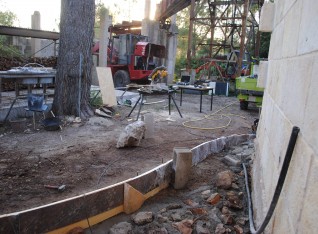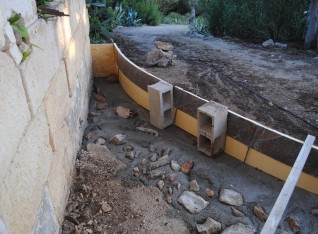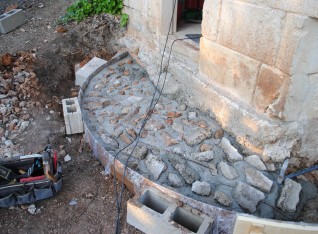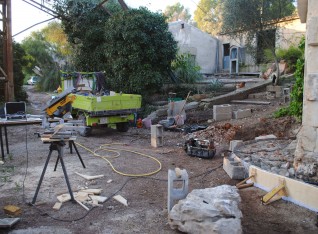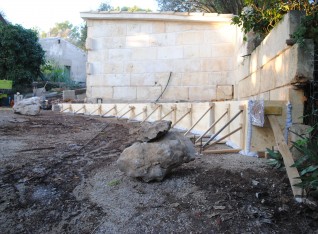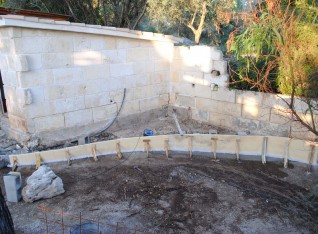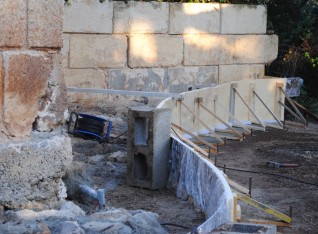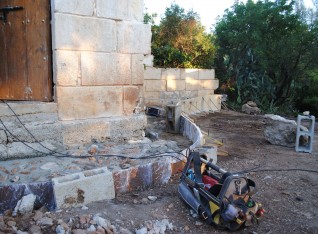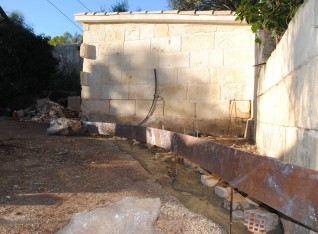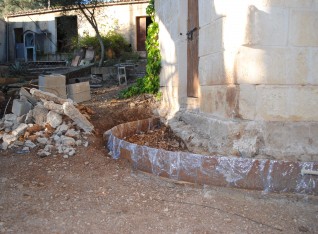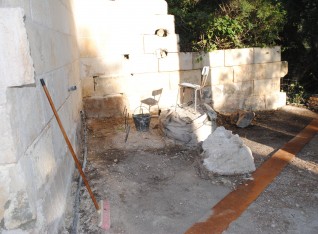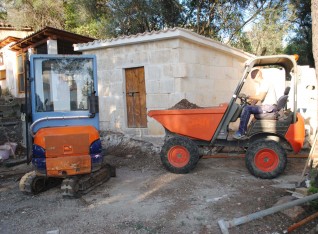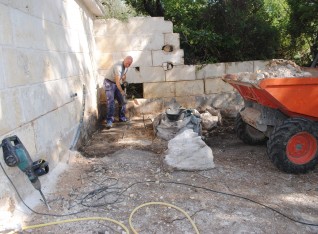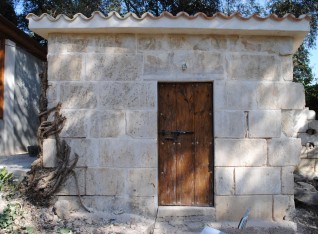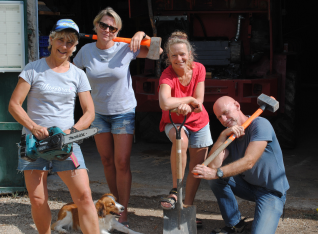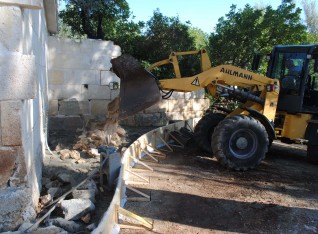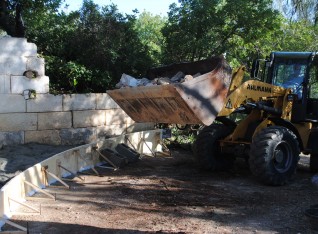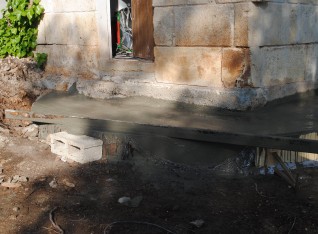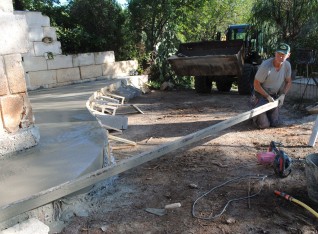Construction around the vinoteca
November 19, 2017The vinoteca - so the place where we make and store the wine - is as good as ready and functional. The roof has been completed a while ago - which also deserves a separate post I believe. But now the focus is on the area around the vinoteca. To step in the building it's 1 step of about 40 centimeter, which is not really comfortable. On the right side of the vinoteca used to be some sort of generator we believe looking at the size of a solid concrete base. We decided to really complete the whole area and then move on to another project. So we are creating a kind of flat platform which could be used as a terrace. Ans has the idea to place a stone cruncher on their which was used to crush big chunks of coal. This large iron industrial heritage icon would do well I guess, but you can't use it anymore as a small terrace. We will see... as with many things the ideas materialize always, give it some time.
This post is to be continued, but now it's time to kick some ass and start collecting some filling material, which is rubble, pieces of piedra, concrete, rocks and other stuff. The terrace platform is not an overhanging balcony so it does not have to be superstrong.
Concrete
We pored most of the concrete yesterday, 8 loads in total, per load 300 liter, so 2,400 liter or 2,4 cubic meters. Our first big machine is a Manitou Ahlmann, a loader. But it's more than just a loader, it's a very versatile tool. It's 4 wheel drive and 4 wheel steering and the front arm is rotating independent from the front wheels. I realize this feature much better now after we have recently bought a real loader only, which has the arm connecting to the steering of the front wheels and without steering rear wheels. I now appreciate the Manitou Ahlmann even more as it's quite difficult to maneuver the other one in a small space. I am still happy with the new pure loader (also an Ahmann by the way and with the same connection type for all the tools), but it needs to be used what it's made for. I must admit that I did my homework poorly before bidding on the auction, I was probably blinded by my addiction for big machines; big => bigger => biggest. So a hint for all you if you are considering buying a loader : check if it's 4 wheel drive, 4 wheel steering and how the arm is connected.
1 - 2 - 3 rule for mixing concrete
How many of you know how to mix concrete?
I didn't know until 2008 when we renovated our homes in Sweden. I remember that on the day I was about to make it I was unsure about the ratio of cement, sand and gravel and how thick or thin it should be, so how much water you should add to it. It's one of those things you learn by doing. Well, I asked my neighbor who was a construction engineer and every time I saw him I asked him questions about construction. How to make concrete, does concrete stick to steel, how do you decide the diameter of the reinforcement steel bars, how deep inside the concrete should the steel are from the outside, how far apart do you place the bars , etc etc etc. Coming from zero building construction knowledge you have an endless number of questions and my neighbor was very kind and shared all this knowledge with me.
- 1 part cement
- 2 parts sand
- 3 parts gravel
- 0.5 part of water is needed to bind the cement *
* = The cement in the concrete
needs water to hydrate and form calcium-silicate-hydrate (C-S-H) which
is the crystalline glue that holds the concrete together. The water is
chemically bound (consumed) during the reaction with the cement at
approximately 50 kilos of water to every 100 kilos of cement.
Therefore, it could be said that a water-to-cement ratio of 0.25 is needed. But..... some of the water gets locked in by the sand and gravel and is not able to react with the cement, so you need quite a bit more. Tests have proven that 0.4 liter of water on every kilo of cement would be strongest, but this would make the slurry hard to work with. If you see the water separating from the slurry you know you added too much water.
Finally done, you always need more concrete than you expect...
We could not finish it on Sunday.
It was getting dark and we were exhausted to be honest.
So yesterday we completed it with another 2 loads, around 600 liter.
Today we have made a step using a round form of plywood to enter the vinoteca without having to climb into it.
And we removed the forms, so this part of the job is done.
